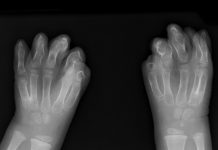Polymyalgia rheumatica (PMR) is a condition that causes pain, stiffness and inflammation in the muscles around the shoulders, neck and hips.
If you have Polymyalgia rheumatica you may also notice other symptoms as well some of which include:
- You may get a high temperature (fever)
- You may feel week, fatigued or feel extreme tired
- You may have difficulty in eating and have loss of appetite
- You may be having recent unaccounted weight loss.
- You may be depressed.
If you have pain and stiffness along with the symptoms mentioned above, you should see your general physician for a check-up at the earliest, so the cause can be investigated.
It can be difficult to diagnose polymyalgia rheumatica because it has symptoms similar to many other conditions, such as rheumatoid arthritis, these conditions will need to be ruled out before polymyalgia rheumatica is diagnosed. After diagnosis you can proceed with suggested treatment which usually includes steroid medication.
How is it treated?
The steroid medication (corticosteroids) which is known as prednisolone is one of the main treatment. This medication is given to relieve you of your symptoms and pain. You will initially be prescribed a high dose of prednisolone for Polymyalgia rheumatica and the dosage will be decreased gradually. Most people with polymyalgia rheumatica will need to take a long-term course of corticosteroid treatment which can last for a year or two, this is done in order to prevent the recurring of the symptoms.
There are many herbal remedies for polymyalgia rheumatica – Comfrey, Devil’s Claw and Valerian are there significant herbs used to treat this disease. They have sedative and antispasmodic properties to alleviate the symptoms of this disease.
Who is affected?
Polymyalgia rheumatica is common amongst the population of the UK. It is been estimated that two in every 2,400 people develop the condition every year. Polymyalgia rheumatica is an age-related condition and people diagnosed with the condition are usually over 70 years old. People below the age of 50 hardly ever develop this condition.
Polymyalgia rheumatic has been found to affect women 2 to 3 times more than men. It is more widespread and is more commonly found among white people. Polymyalgia rheumatica is especially found to be common among white men or Northern European decent.
The cause of polymyalgia rheumatica is still not very clear and under research subject. However, it is found that Polymyalgia rheumatica depends on a combination of many factors including genetic and environmental factors.














